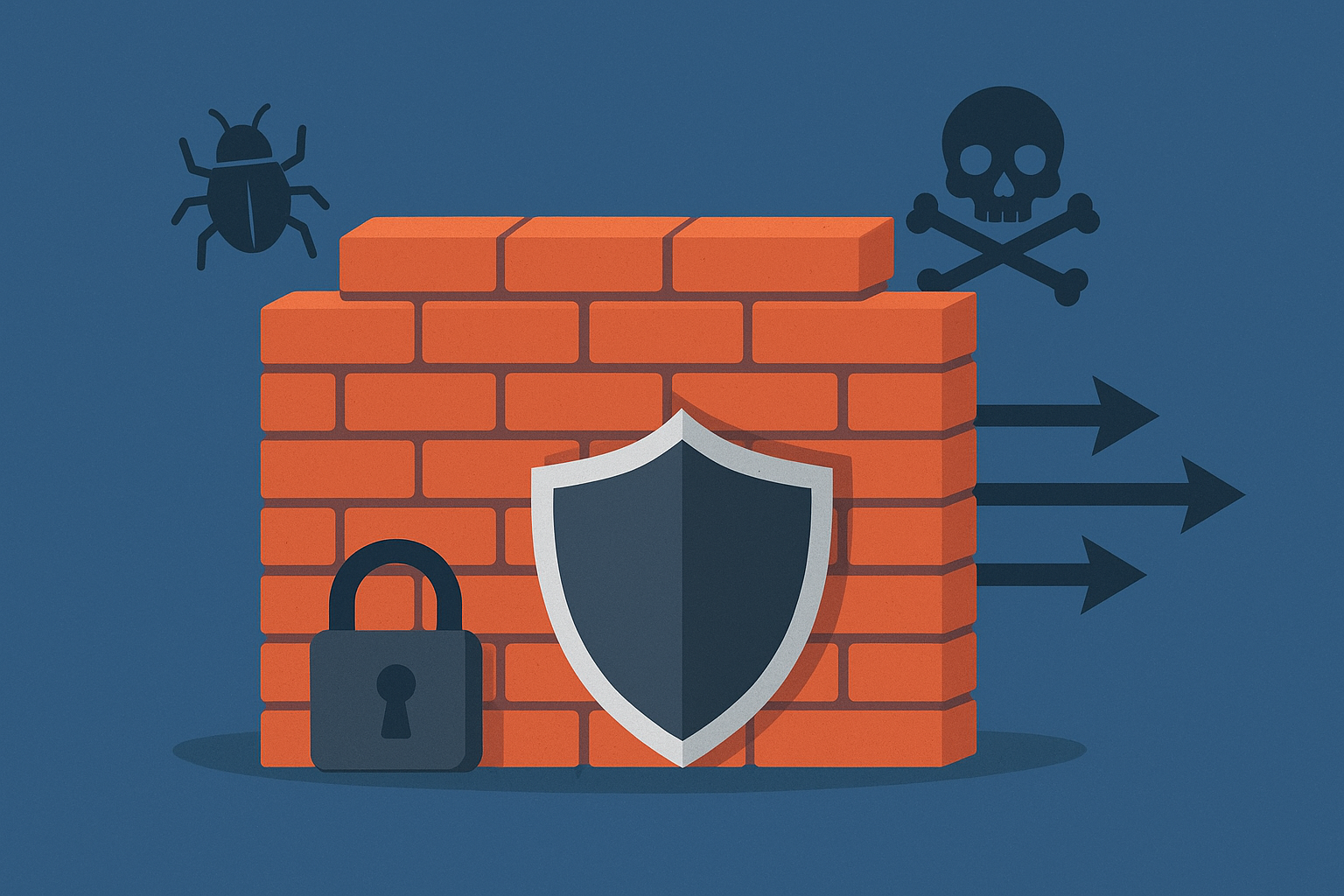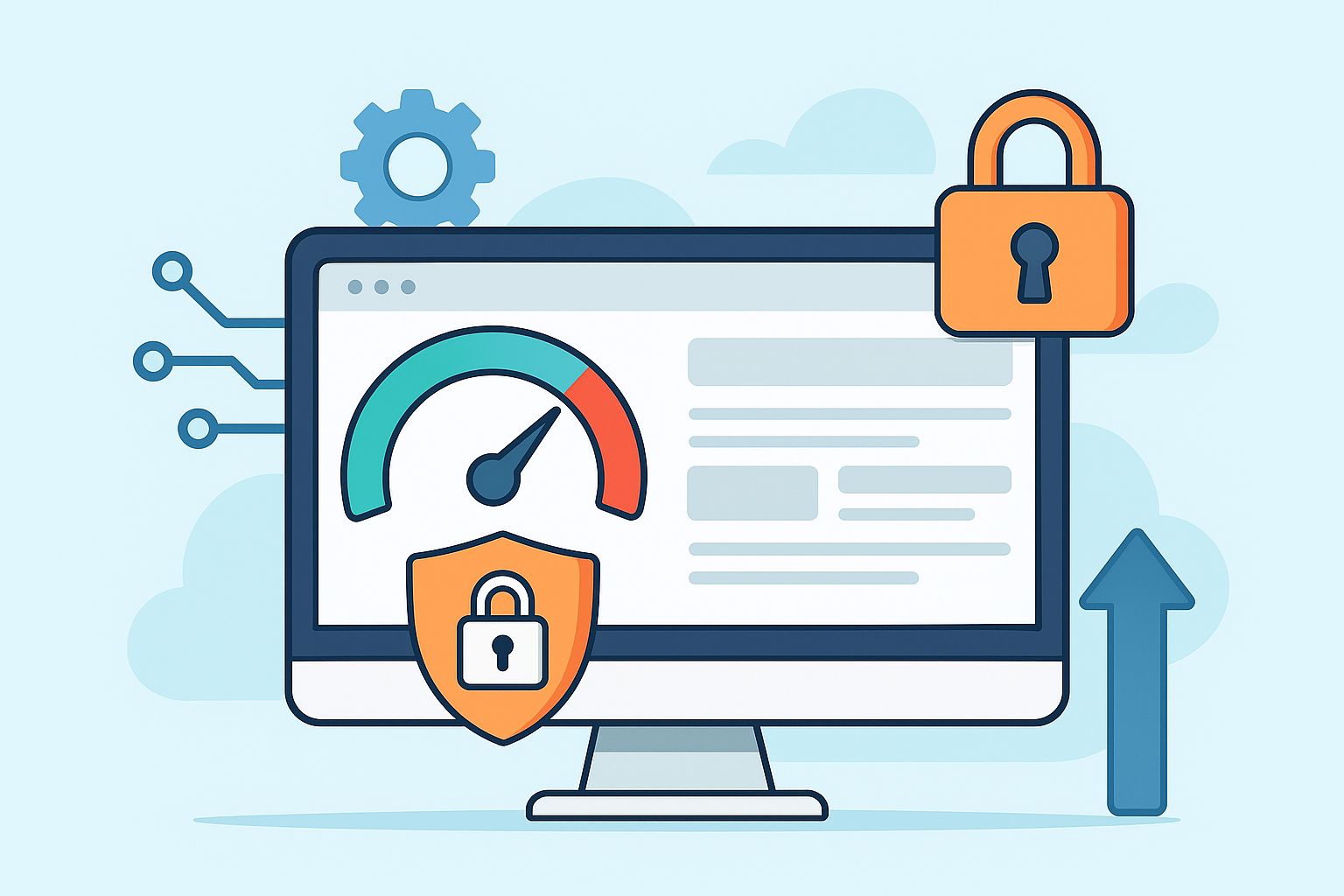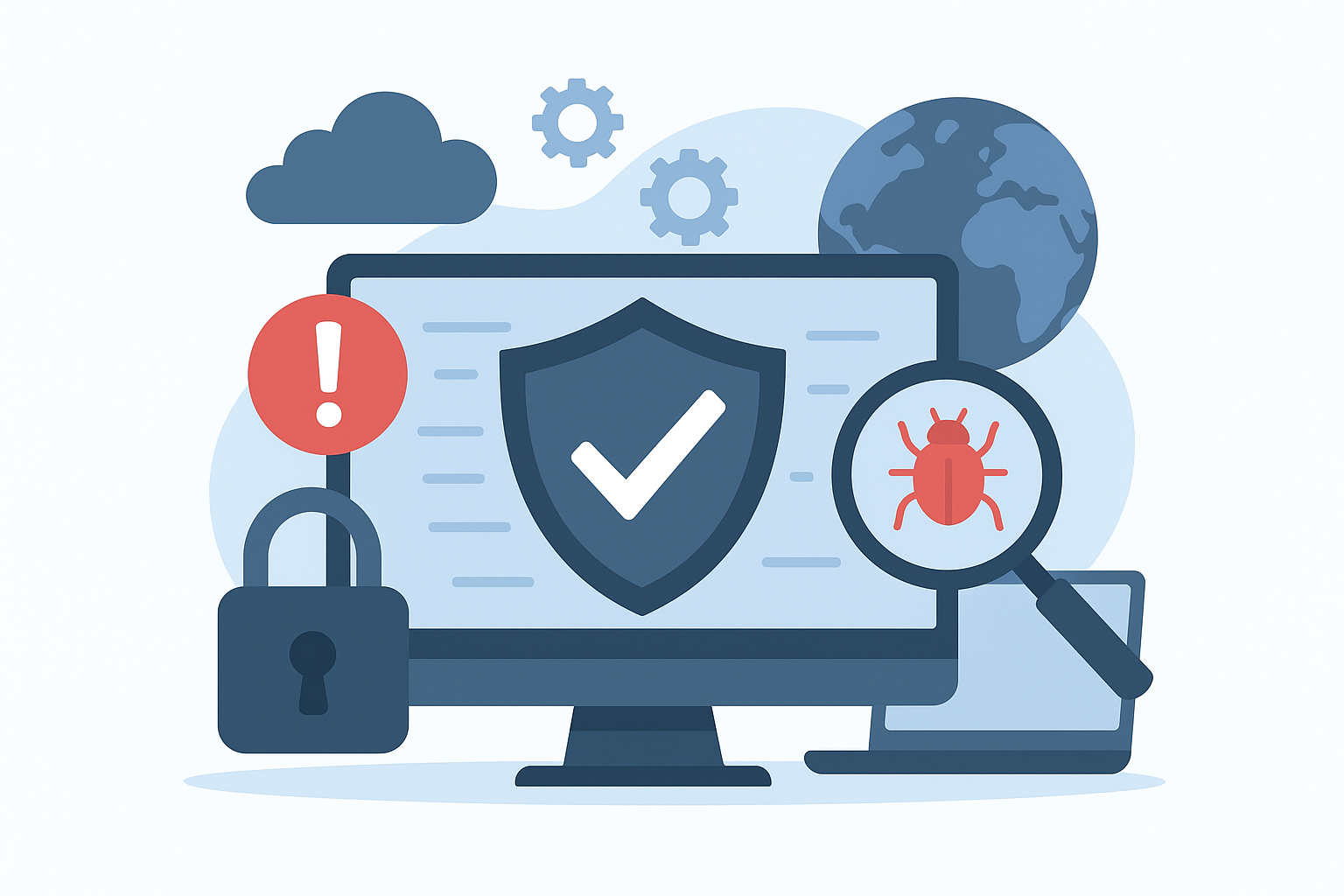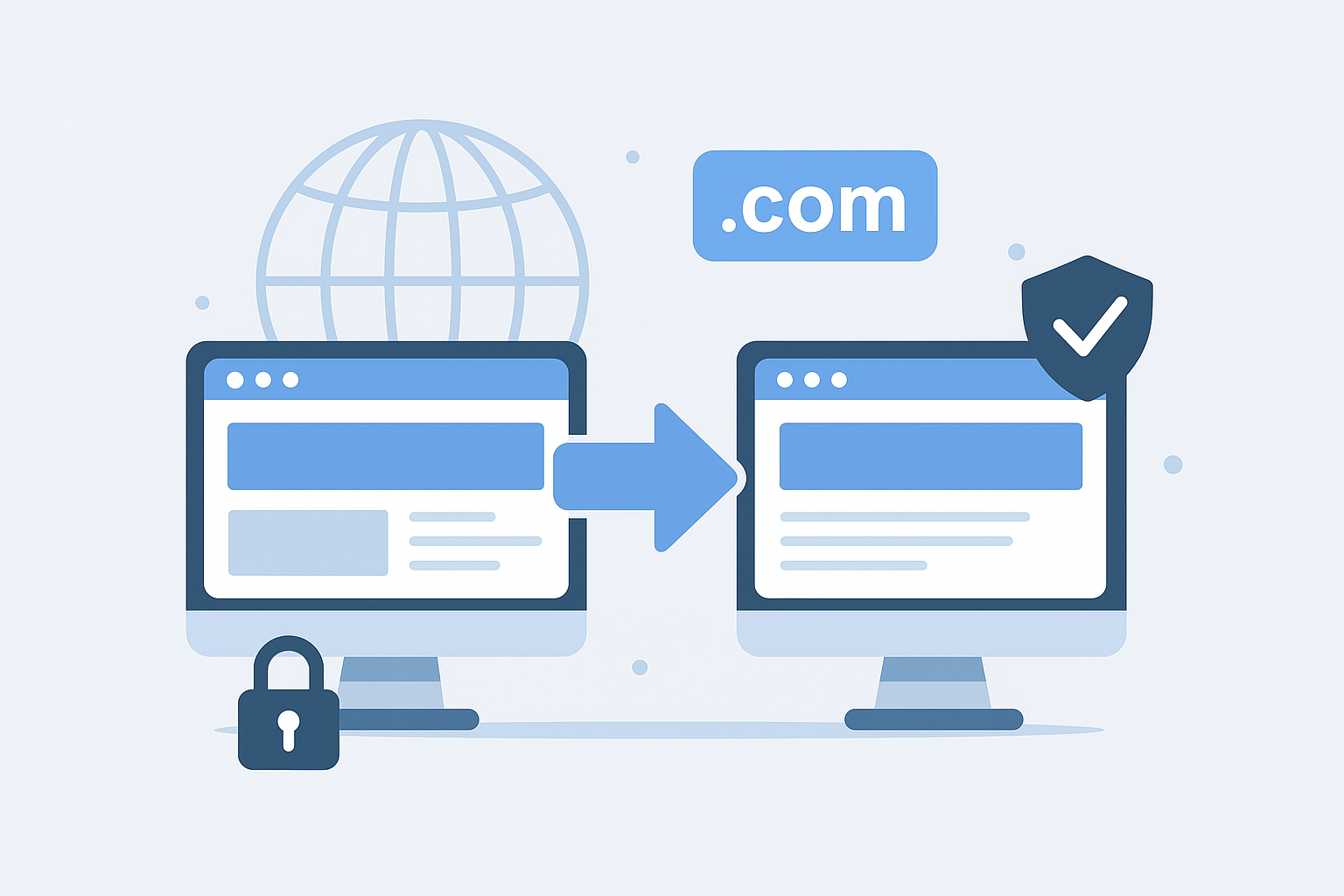Before diving into the world of digital protection, it is crucial to understand why Website Hardening is becoming one of the most important strategies for businesses of all sizes. Cybersecurity threats have grown exponentially in recent years, and attackers are constantly finding new ways to compromise websites. Hackers target everything from personal blogs to enterprise-level eCommerce stores, looking for weaknesses they can exploit. Website Hardening refers to the collection of practices, strategies, and methods that minimize vulnerabilities and make it much more difficult for attackers to breach your systems. By implementing these measures, businesses not only secure sensitive data but also maintain customer trust and ensure long-term success in the digital landscape.
Introduction to Website Hardening
In today’s digital-first world, every website is a potential target for cybercriminals. From phishing attacks to malware injections, threats come in various forms and can cause irreversible damage if proper precautions are not taken. This is where Website Hardening plays a pivotal role. It acts as a security shield that fortifies a website’s infrastructure, reduces entry points for attackers, and keeps valuable information safe.
At FixHackedSite, we understand that businesses can no longer afford to ignore security basics. Even a small vulnerability can lead to massive financial losses, stolen data, and reputational damage. That is why our focus is on providing detailed knowledge and practical steps to help organizations take control of their website security. In this blog, we will explore comprehensive strategies of website hardening, each designed to strengthen your site’s defenses.
Website Hardening is not just a one-time activity but an ongoing process that adapts as new threats evolve. By combining technical measures, best practices, and constant vigilance, website owners can build resilience against the ever-changing landscape of cybercrime. This article breaks down 18 essential aspects of website hardening, explaining how each contributes to overall security, why it matters, and how you can implement it effectively.
Understanding the Core Principles of Website Hardening
The foundation of Website Hardening lies in understanding the core principles that govern website security. At its heart, website hardening is about minimizing potential attack vectors and reducing the likelihood of a hacker gaining access. The idea is not only to secure individual components but also to establish a layered defense system that ensures if one safeguard is compromised, others remain intact to protect critical assets. This approach makes it significantly more difficult for cybercriminals to exploit weaknesses and ensures a higher level of resilience.
Another principle of website hardening is the importance of least privilege. This means that users, administrators, and even applications should only have access to the resources they absolutely need. Overly generous permissions often become open doors for attackers who exploit them to gain unauthorized access. By restricting permissions and limiting exposure, businesses ensure that even if one area is breached, the damage is contained. This principle is a cornerstone of any effective website security strategy.
Finally, continuous monitoring and updating are central to maintaining security. Unlike physical security, where a lock might last decades, digital defenses must constantly evolve. Hackers innovate daily, so static defenses quickly become obsolete. Regular updates, patch management, and monitoring systems play an essential role in ensuring that websites remain protected against both known and emerging threats. These principles combined form the framework for effective website hardening strategies.
Importance of Regular Software and Plugin Updates
One of the most overlooked yet critical aspects of Website Hardening is the routine updating of software, plugins, and themes. Outdated components are often the first targets of hackers because they contain publicly known vulnerabilities that are easy to exploit. When businesses delay or ignore updates, they unintentionally leave their digital doors open, making it simple for attackers to insert malicious code, gain access, or disrupt services.
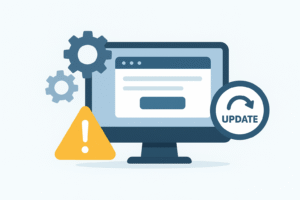 Regular updates serve as a direct defense against such attacks. Developers release updates not just to add features but to patch discovered weaknesses. Ignoring these patches leaves a site vulnerable to threats that have already been documented and circulated among cybercriminals. Therefore, applying updates promptly is one of the simplest yet most effective steps toward a hardened website. A disciplined update routine ensures that you stay a step ahead of attackers who are constantly scanning for vulnerable systems.
Regular updates serve as a direct defense against such attacks. Developers release updates not just to add features but to patch discovered weaknesses. Ignoring these patches leaves a site vulnerable to threats that have already been documented and circulated among cybercriminals. Therefore, applying updates promptly is one of the simplest yet most effective steps toward a hardened website. A disciplined update routine ensures that you stay a step ahead of attackers who are constantly scanning for vulnerable systems.
Additionally, updates improve compatibility and overall performance. Many security breaches occur because businesses continue running outdated software that is no longer supported by developers. Unsupported software does not receive security patches, meaning vulnerabilities will remain unaddressed forever. By ensuring plugins, CMS platforms, and server software are always updated, website owners create a robust environment where security and efficiency go hand in hand.
Securing Administrative Access with Strong Authentication
Administrative access is one of the most attractive targets for cybercriminals. If an attacker gains control of the admin panel, they can manipulate content, steal data, or inject malware. This is why Website Hardening places significant emphasis on protecting administrative access. Using strong authentication methods, such as multi-factor authentication (MFA), adds a powerful layer of defense beyond simple usernames and passwords. MFA ensures that even if login credentials are compromised, unauthorized users still cannot gain entry without additional verification.
Another crucial aspect is enforcing strong password policies. Weak or reused passwords are still among the most common causes of breaches. By requiring complex, unique passwords and implementing expiration policies, website owners can drastically reduce the risk of credential-based attacks. Password managers can also be encouraged to simplify the management of secure credentials. This ensures convenience without compromising safety.
Moreover, restricting login attempts and monitoring failed logins adds further resilience. By limiting the number of unsuccessful attempts, brute force attacks become less effective. Administrators should also ensure that admin panels are not easily accessible through default paths. Changing login URLs or limiting admin access to specific IP addresses further enhances the difficulty for attackers. These combined measures create a strong shield for administrative entry points.
The Role of Secure Hosting in Website Hardening
No matter how strong a website’s internal defenses are, security starts with choosing a reliable hosting provider. Hosting environments that are not adequately secured leave websites vulnerable, even if they are perfectly configured. Therefore, selecting a host that prioritizes Website Hardening is a critical decision for any business. A secure host provides features such as firewalls, intrusion detection systems, malware scanning, and 24/7 monitoring to safeguard client websites.
A good hosting provider also ensures regular updates and server-level patch management. Shared hosting, while cost-effective, can expose websites to risks if one site on the server becomes compromised. In contrast, dedicated or managed hosting options provide stronger isolation and allow businesses to implement stricter controls. By partnering with a provider that understands cybersecurity, businesses reduce the workload of managing complex security configurations on their own.
Additionally, secure hosting providers offer backup and disaster recovery options. Even with the strongest security measures, breaches may still occur, so having quick access to clean backups is essential. A reliable hosting environment minimizes downtime, prevents data loss, and provides a stable foundation on which additional website hardening practices can be built. Choosing secure hosting is not just a technical decision but a strategic one that directly influences overall website resilience.
Implementing HTTPS and SSL Certificates
One of the most visible and essential steps in Website Hardening is implementing HTTPS with SSL certificates. HTTPS ensures that the communication between a user’s browser and your website server is encrypted, making it significantly harder for attackers to intercept or manipulate sensitive information. Without HTTPS, attackers can easily perform man-in-the-middle attacks, where they intercept data transfers and steal login credentials, payment information, or private details. In today’s digital environment, running a site without HTTPS is not only a security risk but also a credibility issue for businesses.
Beyond security, HTTPS has direct implications for trust and reputation. Modern browsers mark websites without SSL as “Not Secure”, which discourages visitors from interacting with them. This can lead to higher bounce rates, loss of customer confidence, and reduced conversions. Moreover, Google has integrated HTTPS as a ranking factor, meaning that sites using SSL certificates have a better chance of ranking higher in search results. Thus, adopting HTTPS is not just about protection but also about creating a trustworthy and professional online presence.
There are different types of SSL certificates, from domain-validated to extended validation certificates. Choosing the right one depends on the nature of your website. While free SSL options like Let’s Encrypt are suitable for small sites, eCommerce and enterprise-level platforms may require advanced certificates that offer higher validation and trust indicators. Regardless of the type, implementing SSL and enforcing HTTPS redirects is a critical pillar of website hardening that no organization should ignore.
Database Security and Management
Databases are the backbone of most websites, storing everything from user information to sensitive business data. As such, they are prime targets for hackers. Website Hardening involves securing databases with a series of strategies that limit exposure and strengthen protection against unauthorized access. One of the most effective methods is restricting direct database access. Databases should not be publicly accessible over the internet; instead, access should be limited to specific servers or trusted IP addresses.
Strong authentication for database users is also crucial. Default usernames like “root” should be avoided, and unique credentials should be created for each application or service accessing the database. Permissions must follow the principle of least privilege, ensuring that accounts only have access to the data they need. For example, an account used for reading data should not have write permissions. These granular permission controls significantly reduce the potential damage in case of a breach.
Regular backups and encryption further enhance database security. By encrypting data both in transit and at rest, businesses protect information even if attackers manage to gain access. Backups should be stored securely and tested regularly for reliability. Implementing monitoring systems that detect unusual queries or access attempts is another proactive measure. Together, these practices ensure that a website’s most valuable asset—its data—remains protected against malicious activity.
File Permissions and Server Configuration
A website’s files and directories are often the first entry points targeted by hackers. Misconfigured file permissions allow unauthorized users to modify, delete, or inject malicious scripts. Website Hardening requires careful configuration of file and folder permissions to ensure that only the right people—and systems—have access. Setting restrictive permissions, such as limiting write access to only essential files, creates a strong defense against malicious changes.
Equally important is proper server configuration. Default server settings often leave unnecessary services running, which can provide attackers with opportunities to exploit. By disabling unused services, removing default files, and ensuring secure server directives, website owners reduce their attack surface. For example, directory listing should always be disabled, as it can expose sensitive file structures to outsiders. Hardening server configurations not only blocks potential attacks but also improves overall performance by eliminating unnecessary processes.
Regular audits of file permissions and server settings are vital. As websites grow and evolve, new files and directories are added, which can inadvertently create weak points. Automated tools can help in scanning for permission misconfigurations or outdated server settings. By maintaining strict control over file permissions and server configurations, website owners lay a solid foundation for a secure digital environment.
Web Application Firewall (WAF) Deployment
A Web Application Firewall (WAF) is one of the most powerful tools in the arsenal of Website Hardening. It acts as a protective barrier between the website and incoming traffic, filtering out malicious requests before they reach the server. WAFs are specifically designed to block common attack types such as SQL injection, cross-site scripting (XSS), and distributed denial-of-service (DDoS) attacks. By analyzing traffic patterns, a WAF distinguishes between legitimate users and malicious bots, ensuring that harmful requests are neutralized.
The value of a WAF lies in its adaptability. Many modern WAFs use machine learning and threat intelligence databases to update themselves continuously. This means that as new attack techniques emerge, the firewall evolves to provide protection without requiring manual intervention. For businesses, this represents peace of mind, as their websites are shielded from both known and emerging threats.
Beyond security, WAFs can also improve performance by caching content and optimizing traffic flow. Some advanced providers integrate WAF services with content delivery networks (CDNs), enhancing both security and speed. Deploying a WAF is not just a luxury but a necessity in an age where cyberattacks are constant and evolving. A properly configured WAF is a frontline defense that ensures websites remain accessible, functional, and secure.
Intrusion Detection and Monitoring Systems
A key aspect of Website Hardening is implementing intrusion detection and monitoring systems that continuously analyze website activity for suspicious behavior. Hackers often attempt multiple probes or stealth attacks before launching a full-scale breach. Without monitoring systems in place, these early warning signs can go unnoticed until it is too late. An intrusion detection system (IDS) works by analyzing traffic, logs, and patterns, alerting administrators to potential threats in real time. This proactive approach ensures that businesses can respond quickly to anomalies before they escalate into severe breaches.
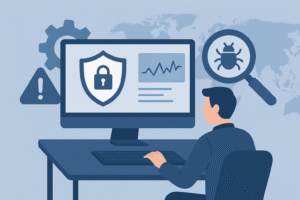 Intrusion monitoring is not just about catching attacks in progress but also about providing valuable data for future security improvements. By examining logs of attempted intrusions, administrators can identify weak points, recurring attack vectors, or misconfigurations. This data-driven approach helps refine hardening strategies and strengthens defenses over time. Continuous visibility into what is happening behind the scenes makes it harder for attackers to go undetected.
Intrusion monitoring is not just about catching attacks in progress but also about providing valuable data for future security improvements. By examining logs of attempted intrusions, administrators can identify weak points, recurring attack vectors, or misconfigurations. This data-driven approach helps refine hardening strategies and strengthens defenses over time. Continuous visibility into what is happening behind the scenes makes it harder for attackers to go undetected.
Modern monitoring solutions often combine intrusion detection with automated response systems. For example, suspicious IP addresses can be automatically blocked, or unusual login attempts can trigger account lockouts. These automated features not only reduce the workload for IT teams but also minimize the reaction time between identifying and neutralizing threats. By integrating intrusion detection and monitoring into the overall security framework, website owners add another critical layer of protection to their hardening strategy.
Backup and Disaster Recovery Strategies
Even with the most advanced Website Hardening techniques, no system is invulnerable. This is why creating strong backup and disaster recovery strategies is essential. A website that lacks reliable backups risks losing years of data in a single cyberattack. Regular, automated backups ensure that businesses can restore their sites quickly in case of malware infection, server failure, or data corruption. Backups are the safety net that guarantees continuity even in the face of major security incidents.
Backups must be stored securely and tested frequently. Simply creating backups is not enough if they are corrupted, incomplete, or stored in the same environment as the primary system. Attackers often target backups first, knowing that businesses rely on them during recovery. By storing backups in secure, offsite, or cloud-based environments, businesses ensure that recovery data remains safe and accessible when needed. Encrypting backups also adds a layer of protection against unauthorized access.
Disaster recovery planning extends beyond backups by defining the steps to follow in case of an attack or system failure. A detailed recovery plan includes assigning responsibilities, setting recovery time objectives, and prioritizing critical functions. This structured approach reduces downtime and ensures that websites can return to normal operations swiftly. With effective backup and disaster recovery systems in place, businesses maintain resilience against even the most catastrophic cyber events.
Protecting Against DDoS Attacks
Distributed Denial of Service (DDoS) attacks are some of the most disruptive threats faced by websites today. These attacks flood a site with excessive traffic, overwhelming servers and making the website inaccessible to legitimate users. Website Hardening includes implementing strategies to detect, mitigate, and prevent DDoS attacks before they cause significant damage. For businesses, downtime caused by such attacks can mean lost revenue, damaged reputation, and frustrated customers.
Mitigating DDoS attacks requires a combination of tools and strategies. Web Application Firewalls (WAFs), content delivery networks (CDNs), and specialized DDoS protection services work together to filter malicious traffic while allowing genuine visitors through. Rate limiting, which restricts the number of requests from a single IP, is another effective tactic for reducing the impact of these attacks. Early detection is critical, as the faster an attack is identified, the easier it is to prevent widespread disruption.
In addition to technical solutions, businesses must prepare operational responses to DDoS incidents. Having a response plan ensures that administrators know how to react quickly, coordinate with hosting providers, and minimize downtime. Many enterprise-level providers also offer scalable infrastructure that can absorb traffic surges caused by attacks. By investing in DDoS protection, website owners not only secure their operations but also build customer trust by ensuring their platforms remain available under all circumstances.
Security Through Regular Audits and Penetration Testing
One of the most effective ways to ensure Website Hardening remains up to date is through regular security audits and penetration testing. Security audits involve a comprehensive review of all systems, configurations, and policies to identify vulnerabilities that may have been overlooked. This process provides a clear snapshot of the website’s security posture at any given time, highlighting areas that require improvement.
Penetration testing, on the other hand, simulates real-world attacks. Ethical hackers attempt to exploit weaknesses in the same way malicious actors would, uncovering hidden vulnerabilities before attackers can. This proactive approach ensures that security gaps are discovered and patched quickly. Penetration testing also helps organizations evaluate how well their defenses perform under realistic scenarios, providing insights into potential blind spots.
Routine audits and penetration testing should be integrated into the overall security cycle rather than treated as one-off exercises. By scheduling them regularly, businesses ensure that new updates, plugins, or configurations do not introduce vulnerabilities. These evaluations also help maintain compliance with industry regulations and demonstrate a commitment to safeguarding customer data. In essence, security audits and penetration testing transform hardening strategies from reactive defenses into proactive protection systems.
Malware Scanning and Removal Tools
No matter how strong your defenses are, there is always a chance that malicious code can slip into your system. This makes malware scanning and removal tools a vital part of Website Hardening. These tools work by constantly monitoring your website files, databases, and traffic for suspicious activity. Early detection of malware is essential because the longer it remains hidden, the more damage it can cause. From stealing sensitive data to redirecting users to harmful websites, malware can cripple both business operations and reputation if left unchecked.
A proactive scanning system helps in identifying threats before they escalate. Automated scanners continuously check for suspicious code injections, altered scripts, or unauthorized file changes. Many tools also compare current files against clean baselines, alerting administrators to even the slightest modifications. This approach ensures that hidden threats do not go unnoticed, and immediate action can be taken to remove them. Such vigilance is an essential layer in a complete hardening strategy.
Removal is just as important as detection. When malware is discovered, effective removal tools quarantine infected files, clean malicious code, and restore websites to safe functionality. In addition, regular scanning and cleaning reinforce trust with users, who are increasingly aware of cybersecurity risks. By integrating reliable malware scanning and removal tools, businesses protect themselves not only from operational disruption but also from loss of credibility in the eyes of their customers.
Secure Coding Practices
The process of building a website itself plays a huge role in its overall security. Website Hardening begins during development, where secure coding practices must be followed to prevent vulnerabilities from being embedded into the system. Poorly written code often leads to common exploits such as SQL injection, cross-site scripting (XSS), or insecure file uploads. Developers who adhere to secure practices ensure that potential weak points are eliminated before the website even goes live.
A critical principle of secure coding is input validation. Every piece of data entered into a website—whether through forms, URLs, or APIs—must be treated as untrusted until validated. Sanitizing and validating user inputs prevents attackers from injecting harmful code into the system. Similarly, error handling must be designed carefully to avoid exposing sensitive information that could guide hackers in exploiting vulnerabilities.
Beyond validation, developers should adopt frameworks and libraries that are regularly updated and widely tested for security. Writing custom code without proper reviews increases the risk of hidden flaws. Regular code audits, peer reviews, and automated testing tools help identify weaknesses early in the development cycle. By prioritizing secure coding practices, businesses create websites that are inherently resilient, reducing the need for excessive patching and crisis management later.
Access Control and User Role Management
One of the biggest mistakes in website management is giving users more privileges than necessary. Website Hardening emphasizes the principle of least privilege, ensuring that each user only has the access required to perform their role. Overly broad permissions open doors for insider threats, accidental misconfigurations, and external attackers who exploit compromised accounts. Restricting access minimizes the chances of attackers moving freely within the system if one account is breached.
Effective access control involves segmenting roles with clear boundaries. Administrators should not use the same accounts for daily tasks that require minimal privileges. Similarly, content contributors, editors, or subscribers should have separate roles with limited access to sensitive functions. By compartmentalizing permissions, organizations prevent unauthorized changes to critical settings or files. This structured approach ensures accountability and reduces the risk of privilege misuse.
Regular reviews of user roles are equally important. Employees leave, contractors finish projects, and business needs evolve, so outdated accounts often linger as security liabilities. Conducting routine audits of all active accounts and their permissions helps ensure that only current, trusted individuals retain access. Strong authentication combined with well-managed access control creates a security framework where vulnerabilities linked to human error are significantly minimized.
Patch Management and Vulnerability Mitigation
Cybercriminals often exploit known vulnerabilities long before organizations apply available fixes. This is why patch management is an essential pillar of Website Hardening. Patches are updates released by software vendors to fix bugs, close security holes, and improve stability. Delaying or ignoring patches means knowingly leaving the door open for attackers who are actively scanning the internet for unpatched systems.
Effective patch management begins with awareness. Organizations must keep an inventory of all software, plugins, and dependencies running on their websites. Without a clear understanding of what needs to be patched, it is easy to miss critical updates. Centralized patch management systems help by automating the tracking and deployment of updates across multiple platforms. This reduces the chances of human error and ensures timely protection.
Beyond applying patches, vulnerability mitigation involves taking proactive measures while waiting for fixes to be released. For example, disabling vulnerable features, restricting access, or applying temporary workarounds can reduce exposure. Regular vulnerability scans also play an important role, as they identify weaknesses that may not yet be patched. By combining disciplined patch management with smart vulnerability mitigation strategies, businesses create an environment where attackers find fewer opportunities to exploit known flaws.
Educating Teams and Raising Awareness
Technology alone cannot guarantee complete protection without the involvement of the people who operate and maintain it. Human error remains one of the leading causes of security incidents, which makes educating teams and raising awareness an indispensable component of Website Hardening. Employees, developers, and administrators need to understand the risks they face and the role they play in maintaining security. Without proper training, even the most advanced security infrastructure can be undermined by a single careless action.
 Security awareness programs help in building a culture of responsibility. Training employees on safe password practices, recognizing phishing attempts, and avoiding risky online behavior reduces the chances of accidental breaches. Developers should be regularly updated on new coding vulnerabilities, while content managers must learn the importance of validating uploads and maintaining clean data inputs. By instilling security-conscious habits, organizations strengthen the human layer of defense that complements technical measures.
Security awareness programs help in building a culture of responsibility. Training employees on safe password practices, recognizing phishing attempts, and avoiding risky online behavior reduces the chances of accidental breaches. Developers should be regularly updated on new coding vulnerabilities, while content managers must learn the importance of validating uploads and maintaining clean data inputs. By instilling security-conscious habits, organizations strengthen the human layer of defense that complements technical measures.
Continuous education is key, as threats evolve quickly in the digital world. Regular workshops, simulated phishing campaigns, and updated training materials keep employees alert and informed. Encouraging open communication also ensures that potential issues are reported quickly instead of being ignored out of fear of mistakes. Ultimately, raising awareness transforms teams from potential weak points into strong allies in the fight against cyber threats, making human vigilance a central part of website hardening.
Continuous Improvement and Evolving Security Practices
Unlike physical barriers, which can remain effective for decades, digital defenses must evolve constantly to stay ahead of attackers. Website Hardening is not a one-time event but an ongoing process that adapts to new vulnerabilities, technologies, and threats. Hackers continuously develop new techniques, which means that yesterday’s secure configuration may no longer be adequate today. A mindset of continuous improvement ensures that defenses remain relevant and effective over the long term.
Staying updated with the latest security trends is essential. Subscribing to security bulletins, following cybersecurity communities, and investing in threat intelligence services helps organizations stay informed about emerging risks. By applying this knowledge, website owners can adapt their hardening strategies before attackers exploit weaknesses. Regularly reviewing and refining policies, configurations, and practices ensures that websites do not fall behind in the constantly shifting cybersecurity landscape.
In addition, businesses should embrace automation and advanced technologies to support evolving practices. Artificial intelligence and machine learning tools are increasingly being integrated into monitoring, detection, and response systems, helping predict and neutralize threats faster. By adopting these innovations while maintaining core hardening practices, organizations create dynamic defense systems capable of withstanding modern attacks. Continuous improvement is not optional but a necessity for survival in the digital age.
Conclusion
The journey of Website Hardening is not about implementing a single tool or following one set of instructions—it is about building a layered, evolving defense system that protects digital assets from an ever-growing list of threats. From securing databases and administrative access to deploying firewalls and educating teams, each step plays a crucial role in creating a resilient online environment. A hardened website not only safeguards sensitive information but also fosters customer trust, business continuity, and long-term success.
As cybercriminals become more sophisticated, businesses must remain equally adaptive and vigilant. Security is not a luxury but a responsibility, and ignoring it can result in catastrophic consequences ranging from data theft to complete loss of reputation. By treating website hardening as a continuous process rather than a one-time project, organizations ensure they remain prepared for both current and future threats.
At FixHackedSite, our mission is to guide businesses in building stronger digital defenses through knowledge, practical strategies, and ongoing support. Website hardening is no longer optional—it is the backbone of sustainable online security. By implementing the strategies outlined in this blog, you take the first step toward safeguarding your website against hackers and ensuring that your online presence remains safe, trusted, and unshakable.
